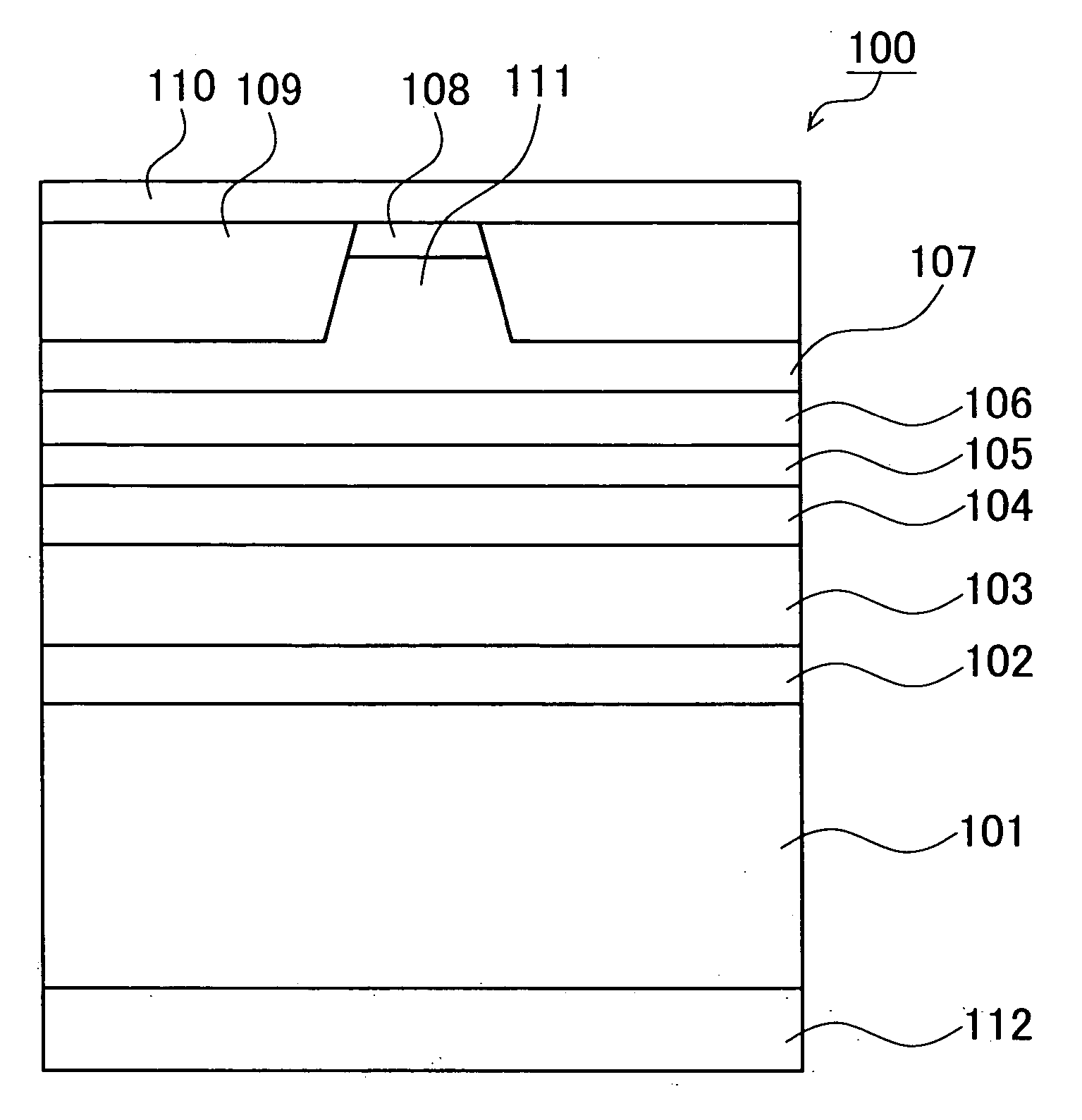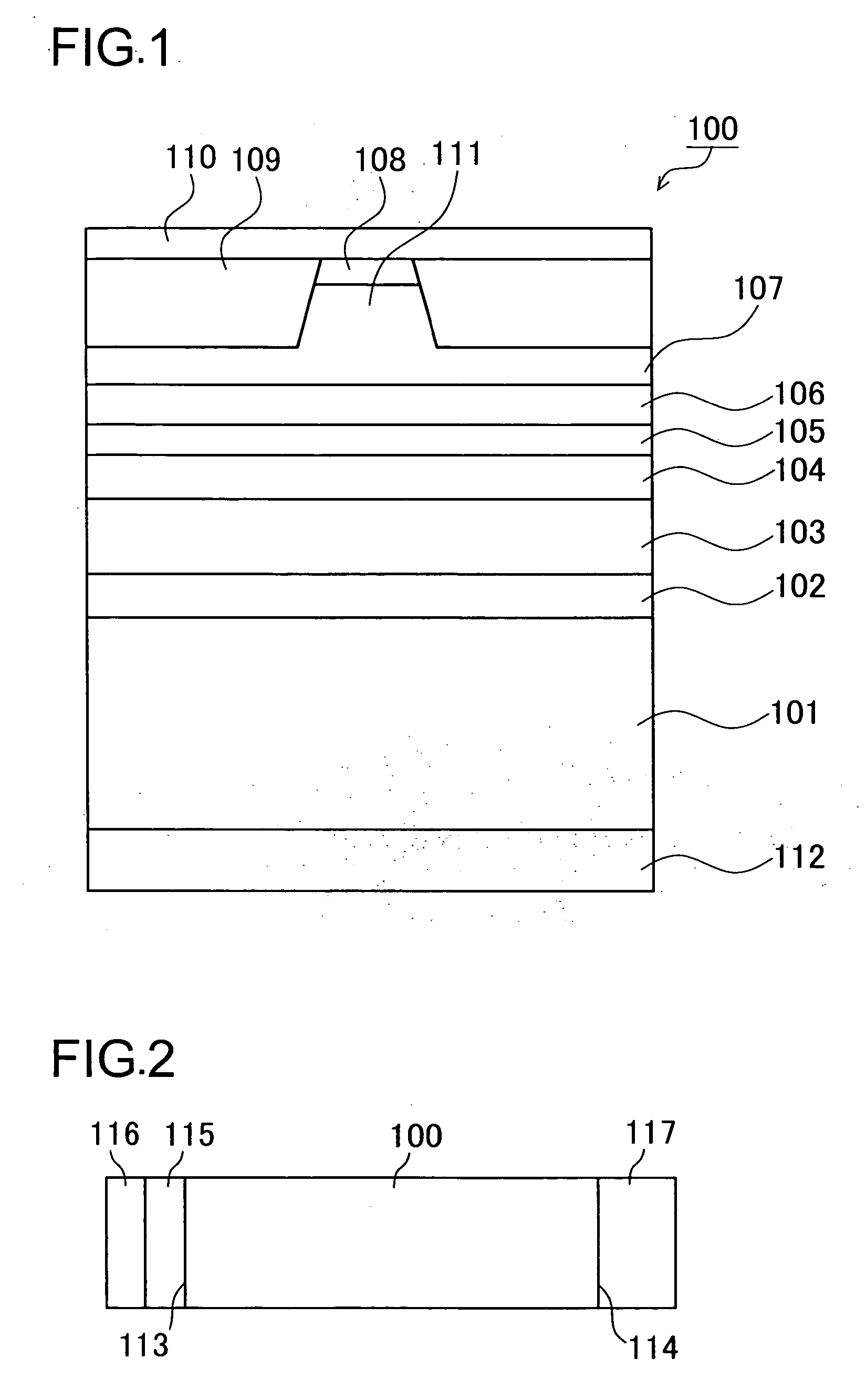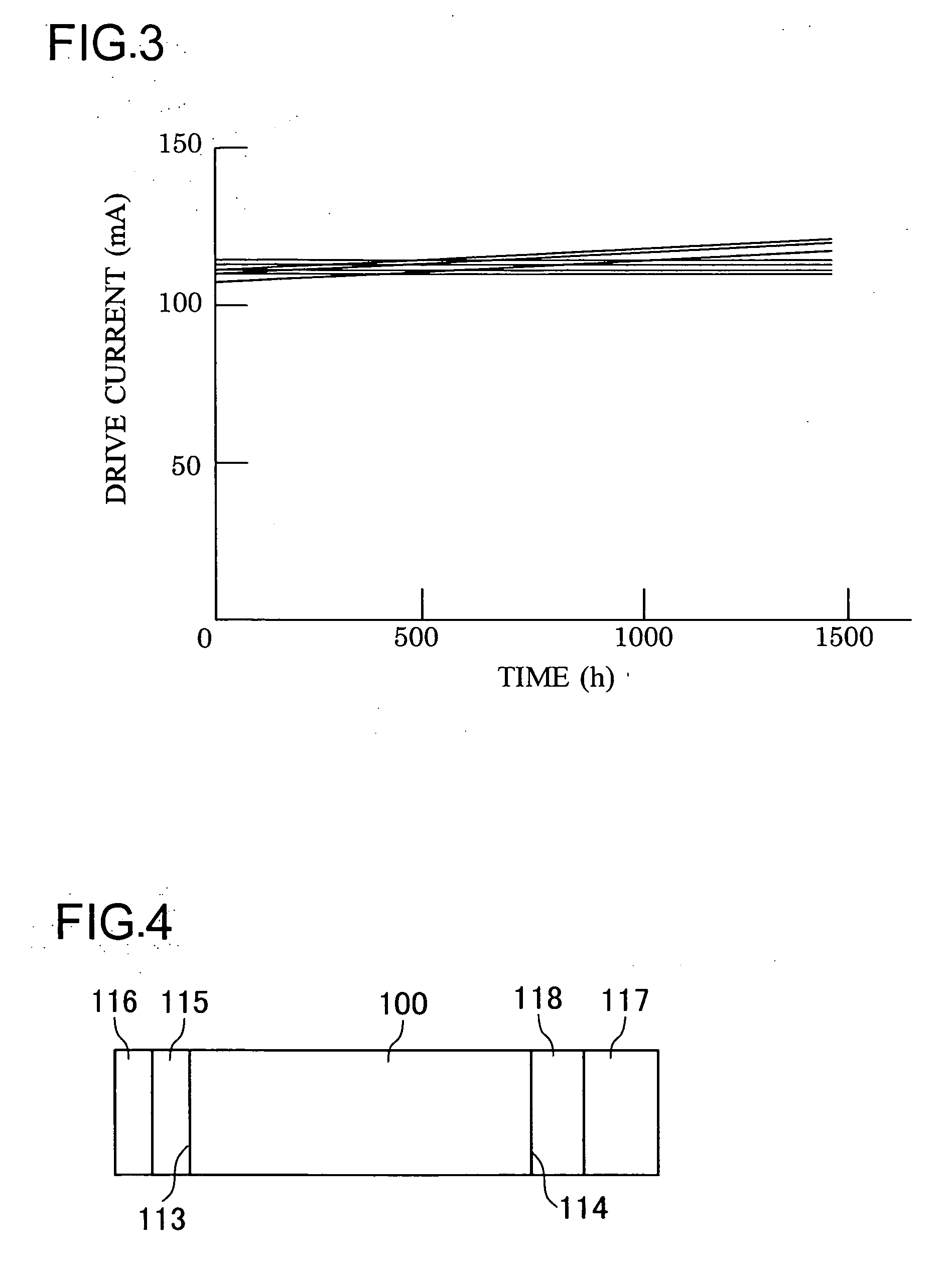Nitride semiconductor light-emitting device and method of manufacture thereof
a technology of semiconductor light-emitting device and semiconductor light-emitting device, which is applied in the direction of semiconductor device, semiconductor laser, laser, etc., can solve the problems of insufficient formation of separation layer, insufficient adhesion, and minute cracks and exfoliation, so as to enhance the adhesion effect and increase the adhesion
- Summary
- Abstract
- Description
- Claims
- Application Information
AI Technical Summary
Benefits of technology
Problems solved by technology
Method used
Image
Examples
first embodiment
[0026] A nitride semiconductor wafer having laser structures and electrodes formed thereon is cleaved into bars by scribing and breaking processes using a diamond point. FIG. 1 is a cross-sectional view of a nitride semiconductor laser bar, taken along a direction perpendicular to the length of the cavity. The nitride semiconductor laser bar 100 has the following layers formed on an n-type GaN substrate 101, in the order named therefrom: an n-AlGaInN buffer layer 102, an n-AlGaInN clad layer 103, an n-AlGaInN guide layer 104, an AlGaInN multiple quantum well active layer 105, a p-AlGaInN guide layer 106, a p-AIGaInN clad layer 107, and a p-AlGaInN contact layer 108. These nitride semiconductor layers can be formed of group III-V nitride semiconductors.
[0027] The active layer 105 may contain about 0.01% to 10% of a group V material such as As or P. In at least part of the p-AlGaInN guide layer 106, the p-AlGaInN clad layer 107, and the p-AlGaInN contact layer 108, there is provided ...
second embodiment
[0045] Next, a second embodiment of the present invention will be described. The second embodiment is the same as the first embodiment except that, in the second embodiment, a separation layer is formed exclusively of aluminum nitride.
[0046] The nitride semiconductor laser bar of the second embodiment has the structure shown in FIG. 2, but the separation layer 115 is formed exclusively of aluminum nitride. The nitride semiconductor layers have the same structure as in the first embodiment. The end face coating film 116 is formed of aluminum oxide, and the end face coating film 117 is formed of a multilayer film of aluminum oxide / TiO2.
[0047] A suitable material for the low-reflectivity end face coating film 116 formed on the cavity end face 113 of the nitride semiconductor laser bar 100 is aluminum oxide, because it is transparent in a short wavelength region about 400 nm, because it develops comparatively low stresses, though depending on film formation conditions, and because it ...
PUM
 Login to View More
Login to View More Abstract
Description
Claims
Application Information
 Login to View More
Login to View More - R&D
- Intellectual Property
- Life Sciences
- Materials
- Tech Scout
- Unparalleled Data Quality
- Higher Quality Content
- 60% Fewer Hallucinations
Browse by: Latest US Patents, China's latest patents, Technical Efficacy Thesaurus, Application Domain, Technology Topic, Popular Technical Reports.
© 2025 PatSnap. All rights reserved.Legal|Privacy policy|Modern Slavery Act Transparency Statement|Sitemap|About US| Contact US: help@patsnap.com



